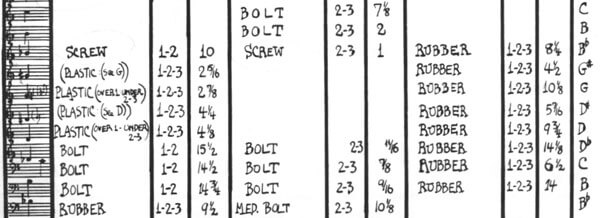

John Cage (Courtesy CalArts / Photo: Steven Gunther)
2012 saw a proliferation of John Cage centennial projects and an influx of prepared piano performances, with numerous renditions of the Sonatas and Interludes amongst them. It is as if suddenly every self-respecting contemporary pianist felt the necessity to honour the neglected master, perhaps so as not to miss the proverbial boat, borne along by the fickle currents of festival-programming fashion. To be fair, the temptation to perform the magnum opus and include it in one’s repertoire is understandable for another reason, and let us hope it is rather this one that motivates colleagues – the cycle is arguably one of the most important keyboard works of the last century.
Written between 1946 and 1948, the four groups of four “sonatas” are separated by four “interludes”, and are meant to express eight rasas, or mental/emotional states that refer to the aesthetics and philosophy of Indian performing arts. The inspiration came from one of only two private students Cage is known to have taught officially, the accomplished Indian music scholar and performer Gita Sarabhai (the other was Christian Wolff). By the time of writing of the Sonatas and Interludes, Cage already had extensive experience with works for one and two prepared pianos, such as Bacchanale, A Book of Music and Three Dances, that he could build on, and the range of sound sources found therein is astonishing and complex.
Although assertive and technically assured in the more robust and virtuosic sections, the strengths of Losseff’s performance lay elsewhere (owing perhaps in part to the limitations of the instrument – the danger here is that the preparations can come “undone” in performance from the more forceful impacts and vibrations, adding unintentional buzzes – although one can argue that this is all in the spirit of the tradition). Rather, these were to be found in the extremely sensitive spacing and timing between events, and the strikingly honest, gracious, humble and unaffected presentation of the stiller material, almost a “non-performance”, a state of being. Each tone or aggregate was treated as priceless and unique, cushioned in meticulously-crafted shimmering resonances and silences. The sounds obtained from the somewhat stunted instrument were more becoming of a 9-foot concert grand, with impeccable control of the softer sonorities by the pianist.

Excerpt of John Cage’s Piano Preparation Instructions for Sonatas and Interludes
As I listened, I found myself wondering whether I was overly-indulgent, allowing myself to wallow in the beautiful sonorities of the portable percussion orchestra on stage. Could it be that I was actually getting misty-eyed at a concert? Was I affected by a weakened emotional state? Were the people next to me feeling the same way? However, as time passed (two minutes, twelve minutes, an eternity…), I stopped asking questions. My ears underwent that curious and wonderful tuning process that can happen magically and imperceptibly after concentrated listening and work in a sound-proofed electronic studio: a focus, a drawing-in, an integral understanding, love and acceptance of all sounds just as they come, without judging. This classic Cagean transformation meant that every sonic event in the hall somehow became a part of the music. The “clack” of an empty plastic bottle falling onto the floor coincided with a muted wooden “clonk” at the end of a section, a creak of a chair became either counterpoint or a part of a phrase, a shuffle or a sigh were one and the same with a musical gesture. Nothing appeared out of place in this inclusive environment for those brief moments, that hour, that snippet of eternity – until it was time to end, and the audience sat in silence, stunned, while the pianist was absolutely still. If one can be forgiven for the unavoidable spiritual analogy, I can’t help but compare this to Yvonne Loriod sharing that she prayed for the audience during certain long resonances in between movements of Messiaen’s Vingt regards sur l’enfant-Jésus.
Finally, someone meekly broke the charged silence, and we clapped, feeling sorry for doing so.
Dr. Losseff is undoubtedly an artist unencumbered by the weight of ambition, unnecessary theatrics or artifice. Her conviction for the music comes through effortlessly, infecting the audience, and the great overall architecture and proportion of the Sonatas as a whole crystallises in her presentation. It is astounding to learn that Nicky Losseff is primarily a musicologist rather than a concert pianist, and we can only hope that she continues to share her striking musicality through more performances and recordings.
—
Xenia Pestova is a pianist living and working in the wilderness of North Wales.
